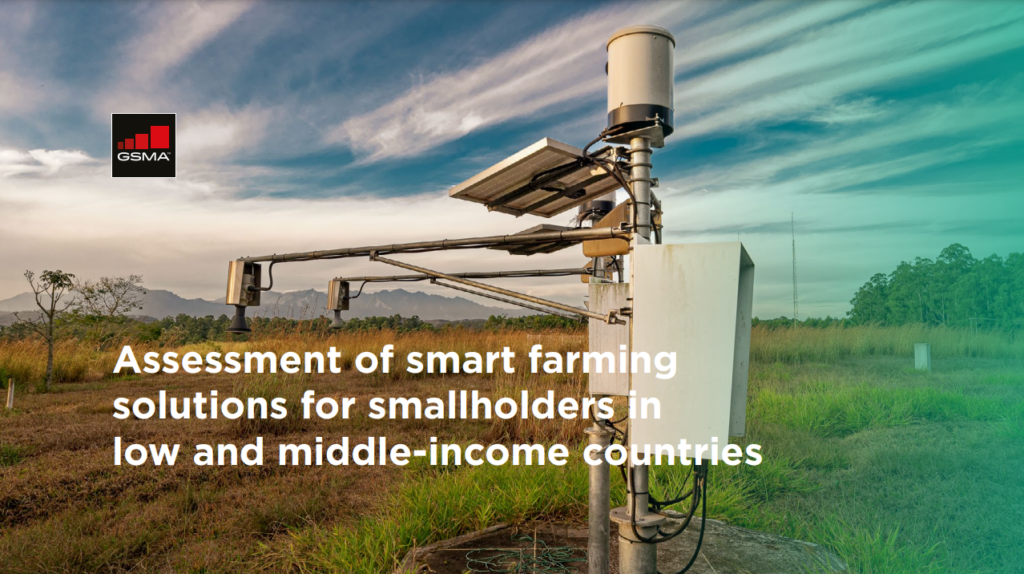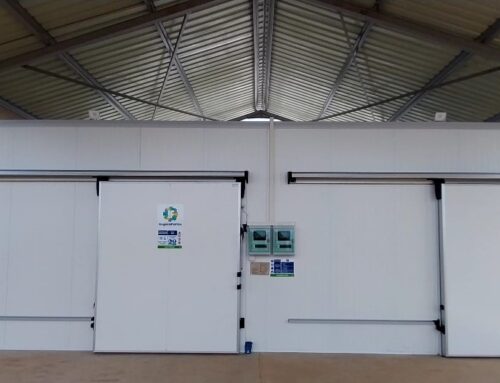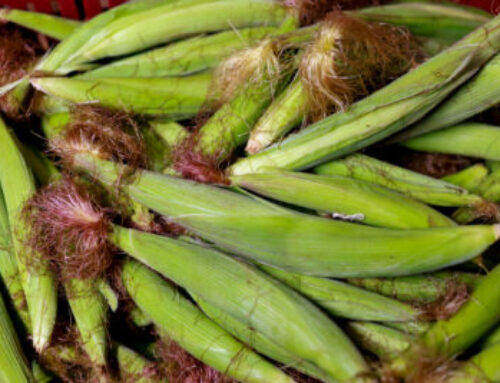Recently launched study report: Assessment of smart farming solutions for smallholders in low and middle-income countries
August 2022 – The GSMA, global organisation unifying the mobile ecosystem to discover, develop and deliver innovation foundational to positive business environments and societal change, through their AgriTech Programme, have recently launched a new study report about smart farming for smallholders in low and middle-income countries. The organization examined more than 70 smart farming solutions being implemented in LMICs around the world, presenting recommendations for investors, donors and other industry stakeholders aiming to invest in smart farming solutions in LMICs. Inspirafarms is featured as one smart farming solution.
Smart farming refers to the use of on-farm and remote sensors to generate and transmit data about a specific crop, animal or practice to enable the automation of on-farm practices. As a result, this drives more efficient agricultural enterprises. Smart farming solutions often rely on connectivity between Internet of Things (IoT)-enabled devices to optimise production processes and growth conditions, while minimising costs and optimising resource use. They play a critical role in helping smallholder farmers in low- and middle-income countries (LMICs) increase their productivity and resilience on-farm and after harvest.
Although smart farming is one of the more recent digital agricultural use cases to emerge in LMICs, early results appear promising. Digitalisation for agriculture (D4Ag) providers report several benefits from smart tools, which shorten production cycles, reduce production costs, and reduce post-harvest loss. Still, smart farming solution providers face multiple challenges, including low digital and technical literacy among smallholders, the high cost of devices and connectivity, and the lack of adequate mobile and IoT network coverage in rural areas.
The Digital Agri Hub team from GSMA identified smart farming sub-use cases across LMICs, including extending the shelf life of crops by providing access to cooling solutions to minimise capital expenditure (CAPEX).
Key recommendations for stakeholders to invest in smart farming solutions
- Prioritise higher-margin value chains for market entry, such as fresh produce, flowers, aquaculture and livestock. These give smallholder farmers slightly more room to invest in new technologies than cash crops, which tend to have very low margins and prices beyond their control.
- Consider the characteristics of a country before deciding on market entry. Pay particular attention to the regulatory environment, available network infrastructure, the competitive environment and the maturity of the targeted value chains.
- Prioritise the right partnerships, since smart farming solutions tend to be more complex than other digital agriculture solutions and, therefore, often require the participation of other ecosystem players. Look to other providers to enhance the service offering, to agribusinesses and cooperatives to help aggregate demand, to financial service providers (FSPs) to facilitate financing or identify new target segments (for the monetisation of data), to mobile network operators (MNOs) for network access and client relationships and to asset or hardware manufacturers to help reduce the cost of the hardware by creating scale.
- Patient capital from early investors will make it easier for D4Ag providers with smart farming solutions to attract additional investors and scale their businesses. As expected, most D4Ag players will need to spend time educating investors on the potential of their smart farming solutions.
- Ensure farmers are involved in the design of smart farming solutions. This will help target the solutions for specific challenges they face in their daily lives and not those that governments, investors or other stakeholders perceive they face.
- It is critical that D4Ag solution providers offer more than just the data generated from their smart farming technology. They must provide means to translate that data into specific recommendations and, eventually, automated actions.
InspiraFarms smart cooling case study
In general, the report presents key insights into the smart farming industry, with highlights on key obstacles for smart-solution providers when introducing their solutions into the market. It also highlights recommendations for investors, donors and D4Ag providers in the smart farming ecosystem. InspiraFarms has contributed to the report by explaining how its on-farm cooling technology is integrating IoT through real-time remote monitoring, providing access to key data that allows farmers and agribusiness to optimize they post-harvest cooling operations and reducing OPEX. Access the full report, and read page 64, for the InspiraFarms case study on how we have adapted our strategies to best serve different markets across East, West, South Africa and Latin America.
The content of this article has been derived from a report, originally written and published by GSMA, Digital Agri Hub, and the GSMA AgriTech Programme. The report was written with the support and valuable contributions of multiple agribusinesses, consultants and external contributors working to make access to smart agricultural solutions accessible to all. Read the full report here



